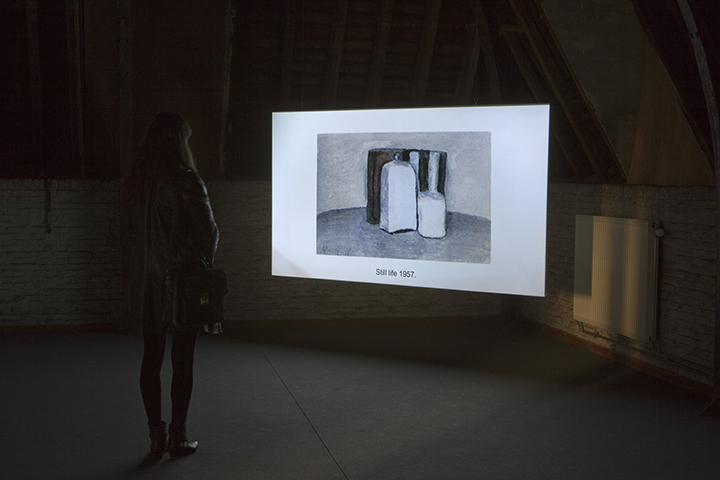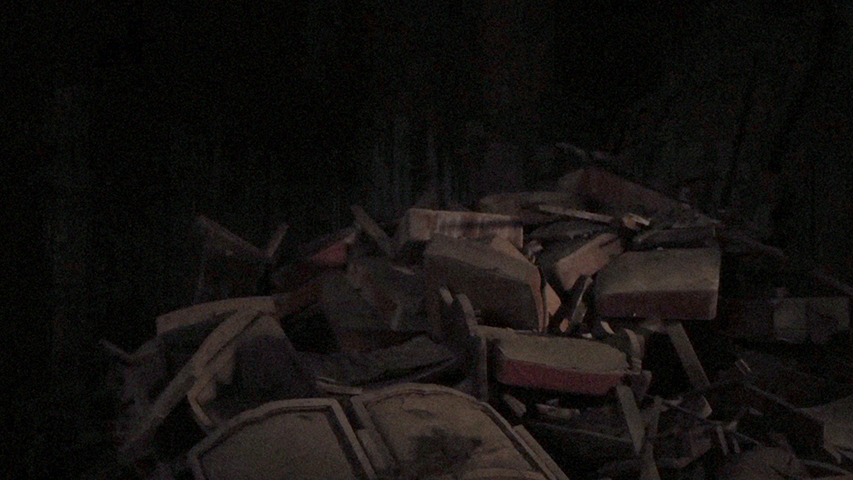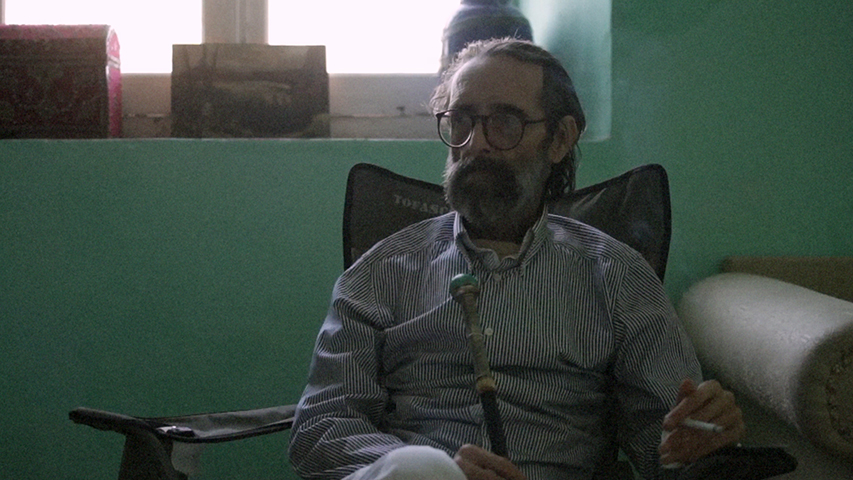







Halloubi also visited the Israel Museum, the Petah Tikva Museum, the Center for Contemporary Art and other art venues in Tel Aviv, and met with a number of artists and curators, including the JCVA's guest curator from Lisbon, Filipa Oliviera.
In the course of his stay, Halloubi and JCVA director Nirith Nelson held a talk on his works at the Faculty show at the The Miriam Nissenholtz Gallery of the Bezalel Academy of Arts and Design MFA program in Tel Aviv. Three of Halloubi's works were screened before students and artists.
As an artist for whom identity is a major subject, Halloubi was conscious of the complexity of his visit to Israel, and said he experienced "a multi-cultural mix of Mediterranean, Arab and European" flavors, with Jerusalem and Tel Aviv as lively cities for the discussion of these issues.
This minimalist filmic gesture receives its dramatic force through the tension built up in the stillness of the first twenty seconds.
The piece creates a fractal triangulated gaze: the spectator watches the man without knowing what he is staring at; the man is staring at a woman's photograph – the mirrored situation raises the question of what he can know of this woman. The renowned photograph was taken by Diane Arbus in 1965 in New York, "Puerto Rican woman with a beauty mark." The photo is of a powerful woman gazing full forward – only her boldly-drawn lips expose the vulnerability and possible passion behind the make-up. The spectator, the third figure in the triangle, is made part of the seemingly endless repeating loop of faces magnetized and defined by yet another invisible face. Or should we count in a fourth, entirely invisible face, that of Diane Arbus gazing at the object of her own photograph? Halloubi created this piece as an indirect response to Edward Said's discussion of Orientalism. If we keep this in mind, we see the mirroring involved in the (hidden) photographer's gaze and that of any western spectator of Halloubi's video.
Nature Morte, 2013
Single-channel video installation, color, sound, 11 min 24 sec
In this work, Halloubi returns to focus on iconic artworks, this time the oeuvre of Italian still-life painter Georgio Morandi (1890-1964). The video shows hands leafing through a book that includes reproductions of Morandi's paintings along with photo journalism of milestones in contemporary current events. The paintings and the events are narrated in voiceover.
Morandi's work is characterized by an overwhelming consistency: for many years he painted vases, bottles and boxes, dealing exclusively with the principal elements of color, shape and composition, and never changing the content of his subject matter. This approach laid the foundations for minimalism in painting; Halloubi's manifest predilection for this work may be related to his own penchant for concise and elegant artistic gestures using the most minimal means imaginable.
The voiceover narration and the anonymous hands leafing through the book cloak this video in a mantle of seeming objectivity. Meanwhile, the linear progression afforded by leafing through pages arranged chronologically lead to a narrative that highlights the contrasts between some of the horrors of nationalism that were contemporary to the reign of modernism in art, and Morandi's single-minded focus on painting qua painting. But the narrator's fine-tuned text and the images chosen are in fact entirely subjective choices made by the artist.
The narrator questions the implications of Morandi's steadfast focus on small-format still-life painting painted within the protected domain of the studio, and juxtaposes them with the atom bomb at Bikini island (1946), the battle for Algerian independence (through 1957) along with modernist landmarks like Picasso's Guernica, Marchel Duchamps first surrealist show in New York (1942), and more. The central questions that emerge relate, on the one hand, to the validity of the work of art created while the world is raging beyond the studio walls, vs., on the other, the offering of art that – stands alone and entirely independent of political events. The video suggests that Morandi's steady and continuous creation allowed him to paint time itself, and that in doing Morandi in fact does participate in historical process, and in fact contributed to the work of interpreting this process.
For Halloubi, an artist whose work does not foreground the contemporary situations his work relates to, these questions are obviously not strictly historical.